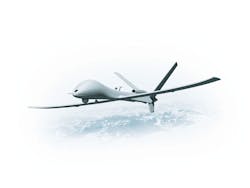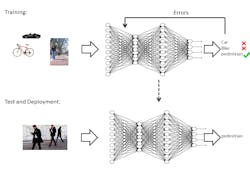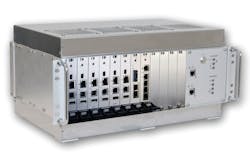Expanding defense capabilities by applying deep learning techniques
Expanding defense capabilities by applying deep learning techniques
Discover how advanced HPEC platforms can give you the performance you need to apply deep learning to your designs
Author: Mohamed Bergach, Ph.D., System/Software Architect at Kontron America- an S&T Company
Leveraging advanced data center computing techniques holds the promise of delivering powerful ways to solve complex defense mission challenges. Deep learning is an increasingly popular technique that can be used to process very large data sets. As the goals for defense systems move in the direction of greater autonomy, deep learning techniques that were once too tough for more traditional processing technologies can now be supported.
Driving how deep learning can be used for defense applications is newly available technologies. These include the latest very large FPGAs, power-efficient GPUs as well as new SIMD processing units that work with today’s more flexible multi-core processors. The intense computing power these components offer greatly surpass the processing limitations that made real-time deep learning architectures virtually impossible. Advancements in high-performance embedded computing (HPEC) platforms have come a long way in not only handling deep learning algorithms, but also in meeting SWaP-constrained system requirements. Unfortunately, it isn’t as simple as plugging in an HPEC platform. Applying deep learning algorithms to a specific system problem will be an ongoing challenge for developers. For their part, embedded computing suppliers will need to continually modify and upgrade HPEC-based platforms making them more easily adaptable to deep learning applications.
How Deep Learning Works
Applications can “learn” by taking any sensor signal (image, sound, GPS position, RADAR, etc.), and represent it in an abstract way, or as features such as shapes, corners, patterns, and more. Important for military use, machine learning can be applied to any collected data. These abstractions are made up of deep neural nets (DNNs), which have dozens of processing level layers. In each layer, data is processed based on a particular type of feature, and this layer provides the result to the next layer. The results of using these techniques have been quite impressive where some results are shown to be better than human-based solutions for applications such as image registration, face recognition, fraud detection, and natural language processing.
“Using HPEC-based systems, the military gets a ready solution for the vast data crunching needs required for deep learning.”
Considerable computational capabilities are needed for deep learning because the network must be “trained”. Typically, data centers have done the heavy lifting to weight and optimize the information numerous times in order to reduce the potential for errors. Each network training result becomes a snapshot. For defense programs, these snapshots would then be deployed on the actual embedded HPEC system for testing. This process continues with the expectation that each snapshot will provide a better result than the previous one.
This illustration is an example of how deep learning works on an embedded HPEC system. It shows huge amount of computation required in the testing phase where a snapshot of the network is taken with each training result and tested. This process is repeated with the expectation that the next snapshot will respond better than the previous one.>>
Solving Deep Learning Challenges with HPEC
Technologies such as high-speed switched serial links, rugged standardized form factors, and HPEC (High-Performance Embedded Computing) middleware can be employed with great success for deep learning applications. These technologies have been developed and honed over the years to address HPEC problems such as synthetic aperture radar (SAR) and military signal intelligence (SIGINT) applications. The challenge for the system integrator, therefore, is to define how deep learning algorithms can be applied to solve their particular problem.
Deep learning techniques have proven in the initial phases to be most useful for pattern recognition tasks such as natural language processing and image feature detection. Taking this approach a step further, deep learning is also a good candidate for to be applied for on-platform processing of streaming signal or image data. These systems would have the power to sift through voluminous streams of data looking for either signals or targets of interest that can help support decision-making by humans as well as autonomous systems.
Using HPEC-based systems, the military gets a ready solution for the vast data crunching needs required for deep learning. This data explosion is particularly evident for information that must be evaluated in real time. Therefore, the opportunity grows in dynamic military environments for deep learning technology solutions that can streamline analysis and enable faster decision-making through critical insights in handling immediate threats. Additional applications include intelligence gathering to help better assess battle scenarios, enable faster situational analysis in the air or on the ground, even provide an edge in understanding enemy or terrorist groups through greater insight into how they behave and communicate.
It is possible to build modular HPEC systems optimized for deep learning applications with readily available platforms. For instance, Kontron’s VX3058 3U VPX board brings server class computing capabilities to the battlefield based on the advanced 8-core version of the Intel® Xeon® Processor D architecture (Broadwell DE). The highly integrated Kontron VX3058 provides superior digital signal processing (DSP) performance, is ruggedized for harsh environments and size, weight, power and cost (SWaP-C) optimized. And, Kontron’s next-generation StarVX HPEC system integrates the VX3058 to leverage the same breakthrough processor performance capabilities of the Intel® Xeon® D-1540. This powerful HPEC platform meets footprint reduction demands through operational computers consolidation via server virtualization. These features are the foundation for deep learning applications to play a strategic role in advancing future military operations.
For deep learning defense applications, the StarVX packs server-class silicon and highly ruggedized technologies in a compact 3U blade footprint. When combined with a high-speed 10 Gigabit Ethernet switch card such as Kontron’s VX3920 and off-the-shelf low-latency middleware, the StarVX enables a new class of compute-intensive applications making it possible to design a deployable platform suitable for deep learning applications.
The evolution of deep learning techniques will undoubtedly advance as processing densities and backplane speeds continue to increase. These breakthroughs further optimize HPEC platforms’ ability to successfully host computationally-challenging deep learning applications on realistically deployable form factors that make sense for a broader range of defense programs.




